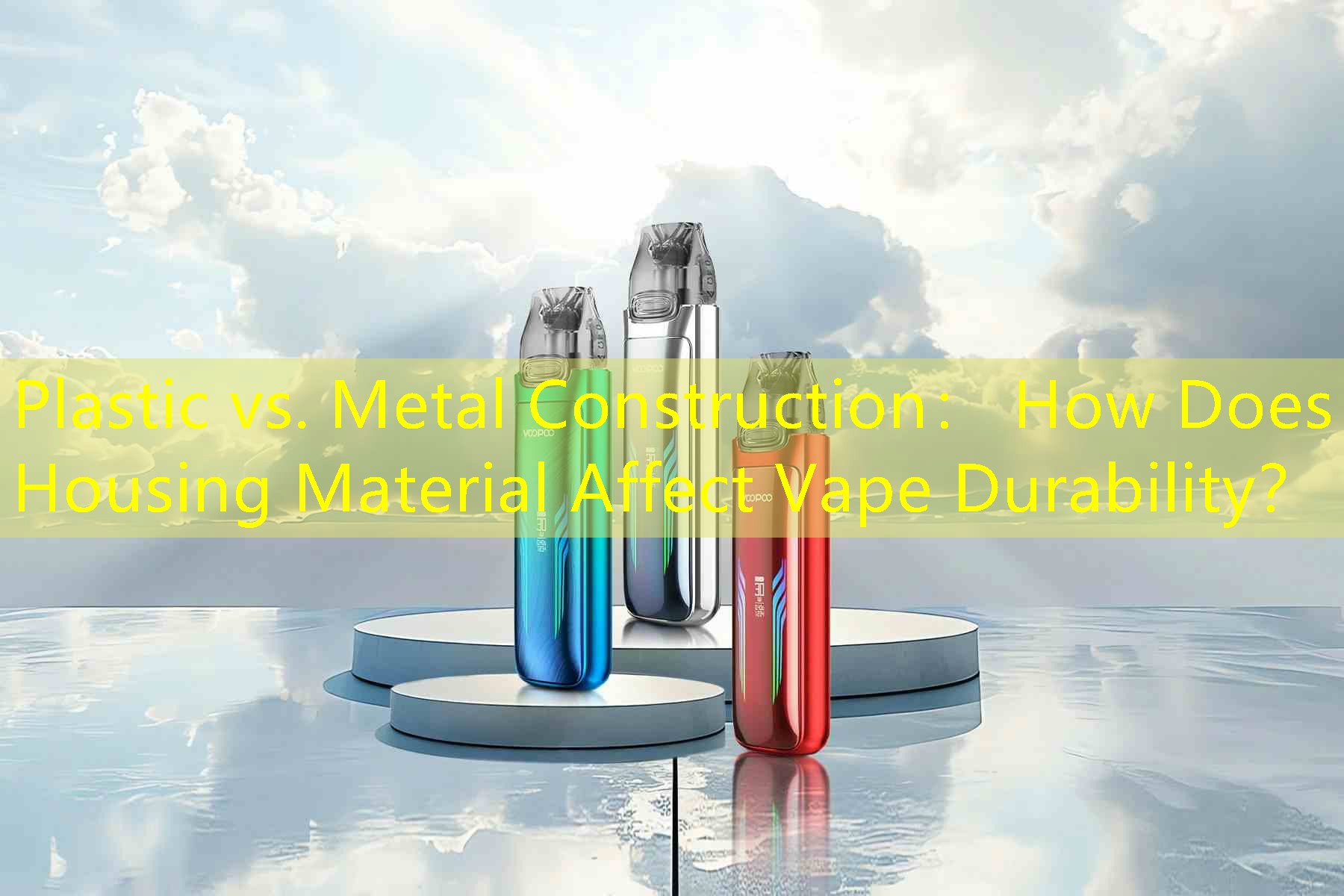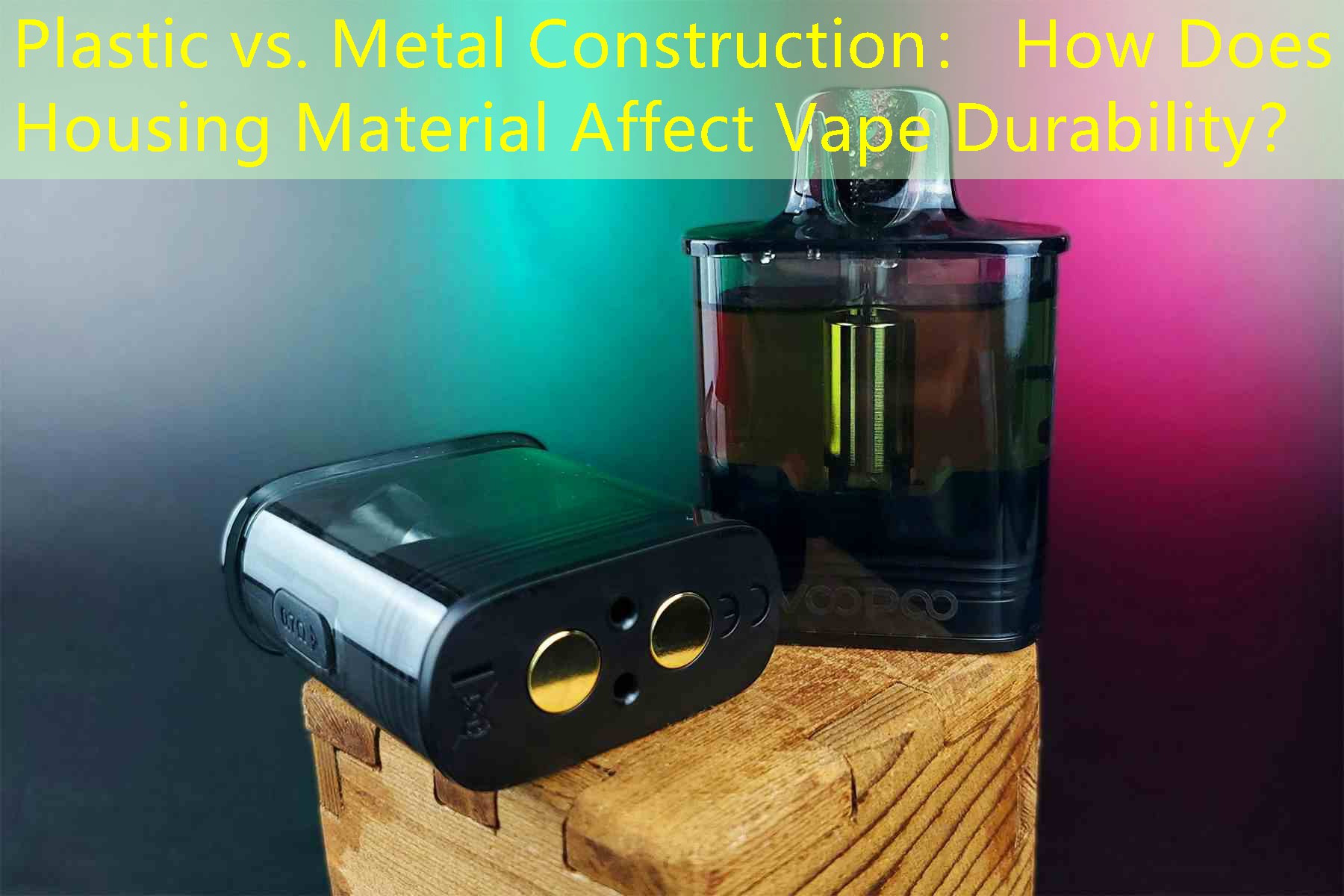Understanding Vape Durability Through Construction Materials
বাষ্পের চির-বিকশিত বিশ্বে, one question frequently arises: how do the materials used in vape device construction impact their durability? With the rise of various brands and models, consumers often face choices between plastic and metal housing for their devices. Each material offers unique benefits and limitations, which can significantly influence the lifespan and overall user experience of vaping devices.

Plastic Construction: Lightweight but Vulnerable

When it comes to vape devices made from plastic, the appeal lies in their lightweight and portable nature. Plastic devices are often more affordable and come in a wide range of colors and designs, making them popular among casual vapers and those just starting. তবে, plastic construction can have significant drawbacks regarding durability.
Plastic devices are more susceptible to physical damage. A drop could easily lead to cracks or breaks, resulting in malfunctioning components. অতিরিক্তভাবে, many plastics degrade over time when exposed to heat and sunlight, leading to potential issues such as warping or color fading. উদাহরণস্বরূপ, a well-known brand, which promotes a line of colorful plastic vape pens, has received criticism for reports of their products failing after just a few months of regular use.
Pros and Cons of Plastic Vape Devices
| পেশাদাররা | কনস |
|—————–|——————-|
| Lightweight | Less durable |
| সাশ্রয়ী | Prone to damage |
| Versatile colors | সংক্ষিপ্ত জীবনকাল |
ধাতু নির্মাণ: Sturdy and Resilient
On the opposite end of the spectrum, metal construction offers increased durability and strength. Devices made from materials like stainless steel or aluminum are built to withstand more wear and tear. Metal vaporizers can endure drops better than plastic counterparts, making them more reliable in everyday situations.
Another significant advantage of metal is its heat resistance. Metal devices typically handle the vaporization process better, which can result in a more consistent and enjoyable vaping experience. Brands that invest in high-quality metal housing often tout longer product lifespans, and many seasoned vapers prefer these devices precisely for this reason.
তবে, metal devices come with their own set of challenges. They tend to be heavier, which can be a drawback for users seeking a lightweight option. অতিরিক্তভাবে, manufacturing costs for metal devices are generally higher, which can translate into a steeper price for the consumer.
Pros and Cons of Metal Vape Devices
| পেশাদাররা | কনস |
|—————-|————————–|
| Durable | Heavier than plastic |
| Heat resistant | Higher price point |
| দীর্ঘ আয়ু | Limited aesthetics |
Consumer Preferences and Market Trends
As consumers continue to navigate the vaping market, their choices often reflect their personal preferences regarding plastic vs. metal constructions. Many vapers prioritize durability and reliability, leaning towards metal devices. Others, particularly beginners or those looking for a more affordable option, may initially choose plastic devices.
Recent surveys indicate a growing trend towards more premium metal constructions. উদাহরণস্বরূপ, a study conducted with over 1,000 vaping enthusiasts revealed that 65% preferred metal devices due to their durability and performance, illustrating a significant shift in consumer behavior.
Real-World Examples: Brands and Their Choices
Several leading brands showcase the differences between plastic and metal constructions. উদাহরণস্বরূপ, the Juul, primarily crafted from plastic, has become incredibly popular but has faced issues with durability after extensive use. বিপরীতে, brands like GeekVape offer robust, metal body options that many users report lasting well beyond their initial expectations.
User reviews often highlight these experiences, showing a clear divide: plastic users express frustration over product durability, while metal users frequently praise the longevity their devices offer.
উপসংহার
সংক্ষেপে, the construction material of vaping devices plays a crucial role in their durability. While plastic devices may serve well for transient users or those seeking a vibrant aesthetic, metal constructions are favored for their longevity and resilience. Understanding the trade-offs between these materials can help consumers make informed choices that align with their vaping habits and preferences.







